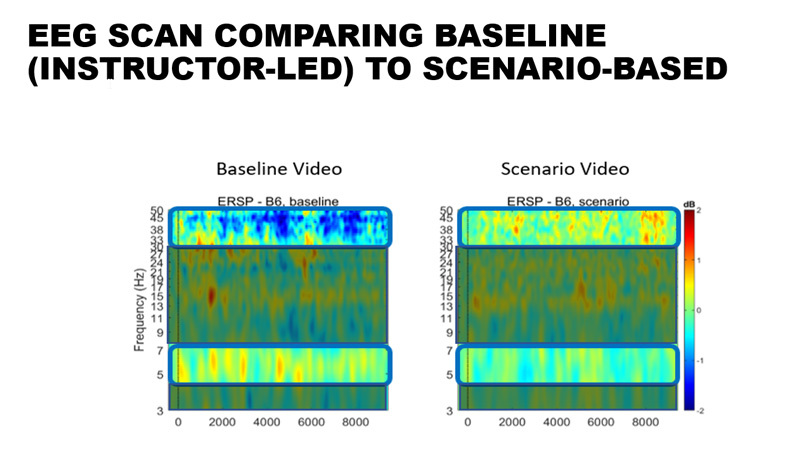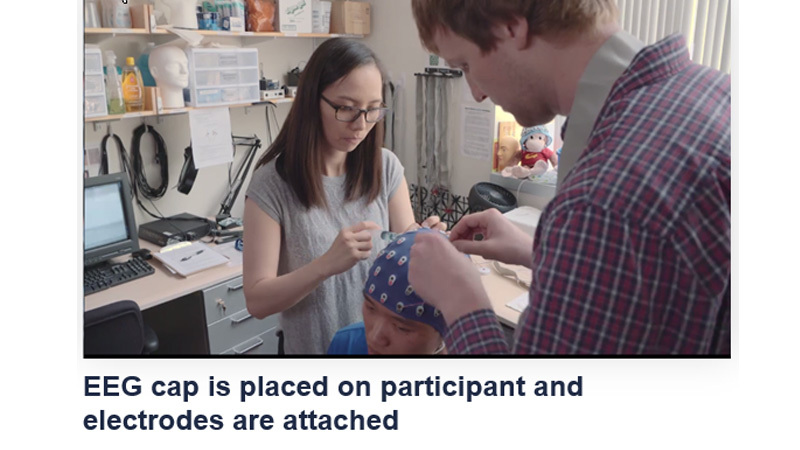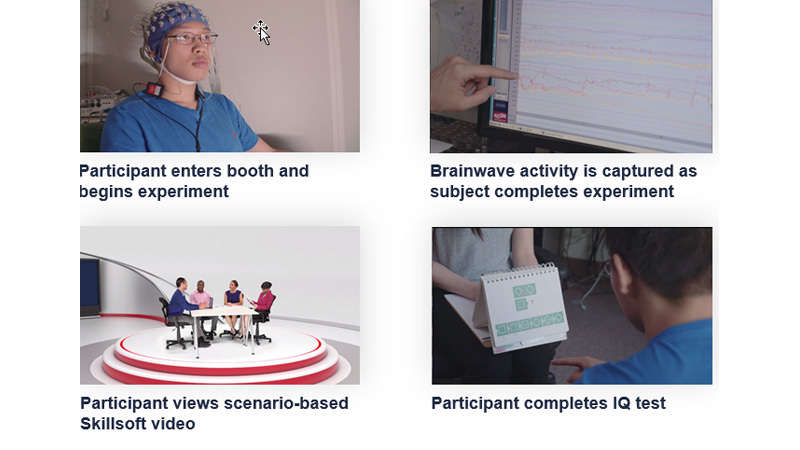A Guide to Essential Executive Leadership Training


As leaders in our industry, Skillsoft continues to seek to understand exactly how the brain processes and retains information to improve an employee’s performance. In previous blog posts, we discussed how important it is to further our specific understanding of retention and application so that we can apply findings to our course design and development. This is why we partnered with the Massachusetts Institute of Technology’s Office of Digital Learning and Accenture to embark on an extensive research initiative into crucial aspects of the science of learning.
In the first phase of the research revealed intriguing insights related to our business skills and leadership video-based course content. As part of the study, subjects watched one of two versions of “The Art and Science of Communication.” The content of the courses was identical, but one version presented the content using a scenario-based instructional strategy while the other used an instructor-led instructional strategy (baseline). We aimed to investigate whether the scenario video, which is inherently more interesting, would also better capture the subject’s attention and therefore enable employees to perform better in the post-test.
The first phase demonstrated that the treatment and design of the video materially influenced the expressed level of engagement by the learner. Delivering an instructor/expert lecture on camera, interspersed with bulleted concepts, is the least engaging way to present critical business skills and leadership content. The findings suggested that learners crave a storyline, a narrative, and some degree of self-directed, progressive disclosure of the concepts.

Skillsoft recently concluded the final phase of the research initiative. The research subjects were Accenture employees. The results of this phase demonstrated that employees rated the scenario-based course as markedly more interesting than the instructor-led course. More importantly, employees who watched the scenario-based video performed significantly better on post-assessments than those who watched the instructor-led (baseline) video.
The EEG study results indicated that employees watching the scenario-based course were significantly more attentive and focused during the process of watching the scenario relative to watching the instructor-led video. Analysis of the EEG results illustrated patterns which demonstrated significantly increased gamma synchronization and theta desynchronization. In layman’s terms, this means that the EEG electrode connected to the pre-frontal cortex of the brain. This insight is particularly important for soft or “power” skills and behavioral training content which includes leadership training since this is the region of the brain implicated in planning complex cognitive behavior, personality expression, decision-making and moderating social behavior.

This research is highly supportive of Skillsoft’s instructional strategy and course design and development. We seek to help customers achieve superior learning outcomes through our scenario-based video course content. Through this research, we have clear evidence that our scenario-based course content results in an improvement in learning outcomes. At the end of the day, that’s what should be most relevant to any learner or organization.
These findings will continue to inform design considerations for Skillsoft’s instructional content.
Here are two course samples that demonstrate Skillsoft’s use of scenario-based instructional design.
Heide Abelli is the SVP of Content Product Management at Skillsoft. Mark Onisk is the Chief Content Officer of Skillsoft
We will email when we make a new post in your interest area.

